Improving Quality through collaboration
(A pdf copy of the presentation slides can be downloaded here.)
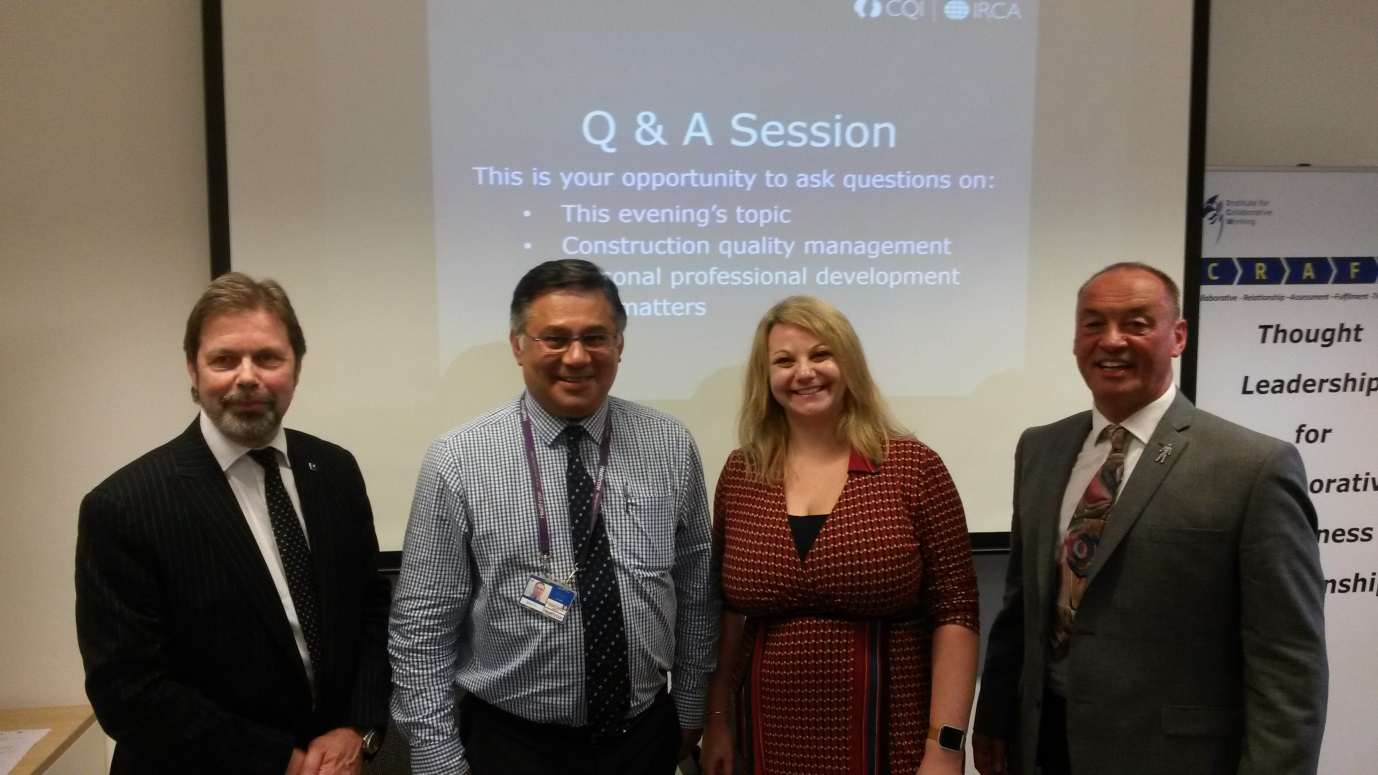
Presenters: (left to right) Paul Greenwood, Greg Faria, Bethany McCulloch, Elvin Box
The Construction Special Interest Group (ConSIG) extends its thanks to all those who attended the event ‘Improving Quality through Collaboration’ on Wednesday 30th May 2018. The event was a great success with around 60 people in attendance with extremely positive feedback.
The event aimed to give those attending an insight into the broad perspectives of how collaboration can provide real benefits to all parties across the Construction sector. Our speakers represented views from Clients, Tier 1 and Tier 2 Contractors as well as from a specialist consultancy service.
Improving Quality through Collaboration:
Paul Greenwood – MD Greenwood Consultants Ltd
Following an introduction to the evening from Neil Mellor representing the CQI ConSIG, Paul started the evening by providing a detailed insight on why, when and how we should collaborate. He also provided an overview on the landscape of collaboration across the last 25 years both within the construction sector and more broadly with the advent of BS 11000 and how this has impacted on the current thinking.
Paul started with the need to define common objectives and mutual alignment to determine where the real value could be gained for all involved. He made the delegates consider what value is, what you want it be and for Contractors and those involved in Building to look further downstream across an assets lifecycle. This was portrayed by the 1, 5, 200 long term cost/value of owning/using a Building, where 1 is the design and construct aspect, 5 the operation and maintenance aspect and 200 the final business running costs. He suggested that most Clients see the build phase as a nuisance!
On that basis alone, Paul reinforced that the sector needs to work harder at collaboration and really get to understand the Clients Business case, thus moving from a transactional relationship to a collaborative one, this inevitably increases value and trust.
This was expressly shown by the Constructing Excellence “three overriding Principles” model where collaboration requires robust/appropriate tools and processes alongside culture and behaviours to be held in balance by a common vision and honest and open leadership by all those involved.
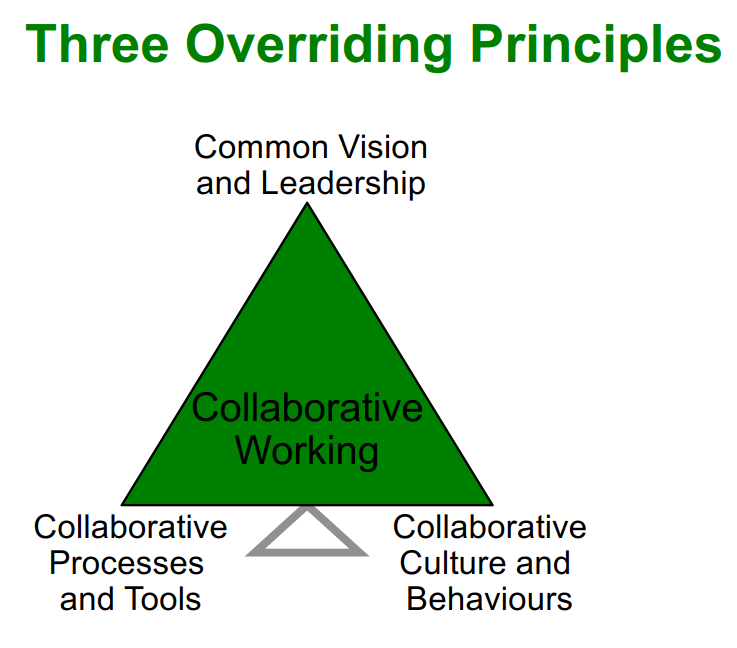
Paul fully believes that selection of partners should be by “collaborative competence” and that the outcome of any partnership would be managed by six critical success factors
Paul then tabled a timeline of how collaboration and the frameworks and contracts has developed over the past 25 years both within the construction and more broadly across the business landscape. This included such highlights as “Never waste a good crisis”, through the government’s 2025 Construction whitepaper to the most recent post Grenfell documents such as those produced by the Housing Forum.
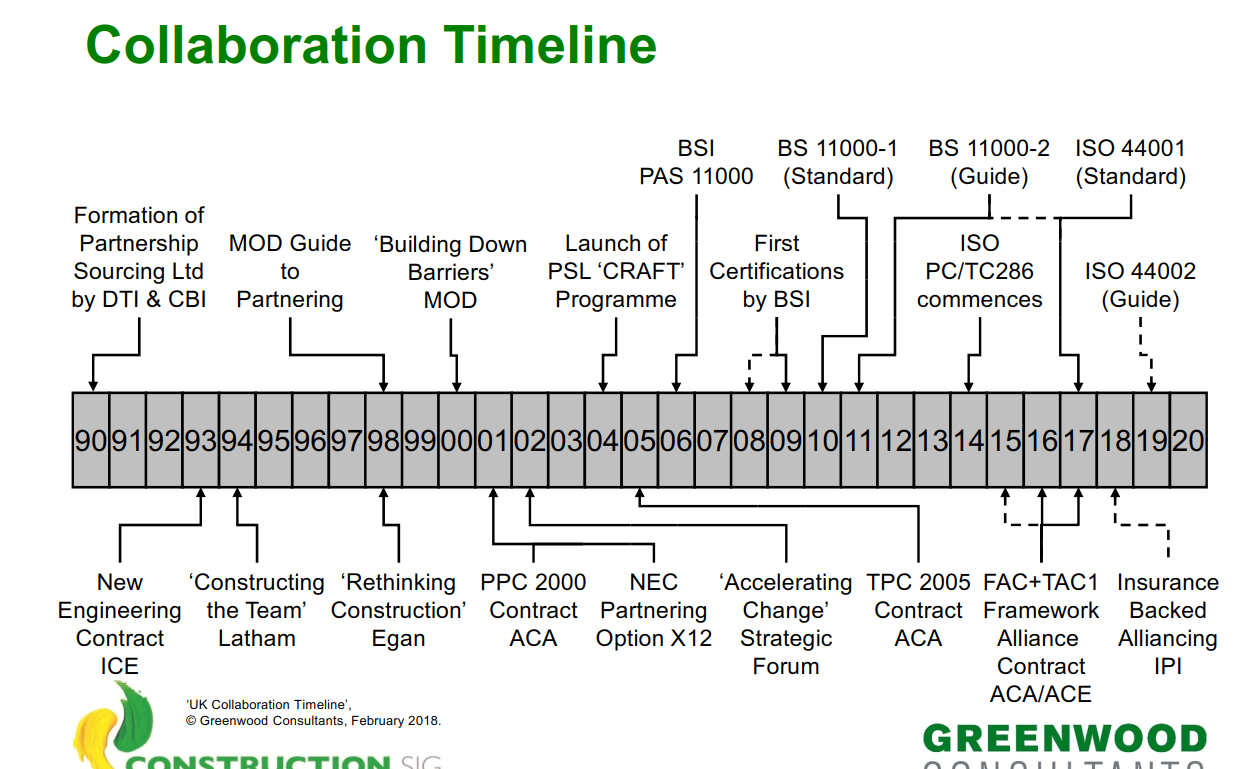
But the core challenge still remains – that of moving beyond tactical project by project arrangements to real mutually beneficial long term strategic partnerships.
Paul then showcased how this was all wrapped up firstly through BS 11000 and more recently through its successor ISO 44000. Both of these provide a framework for collaboration focusing on getting organisations to structure their approach through initially looking at what they want out of the approach, then what organisations have similar values, and then finally looking to how this relationship is managed.
Paul concluded that the key for good collaboration revolved around defining Value and the need to have three key factors to be successful, namely: –
- Vision/leadership
- Culture / behaviours
- Structured systems

Collaboration at Heathrow – A client’s perspective
Greg Faria – Quality Manager
Greg provided an overview on how collaborative thinking has developed in the broad landscape of Heathrow. The regulated business model at Heathrow has a general lifecycle of around 5 years. In the previous period, there were in excess of 300 suppliers and a hands on approach by HAL that included a Quality function in excess of 20 people.
For the current period, HAL decided to take a more collaborative approach and established a tender process that has resulted in a much smaller supply chain that are much more aligned to HALs collaborative vision. This approach was established in conjunction with the supply chain and has helped reduce the current supply chain to around 7 core Tier 1 suppliers and a further 20 or so Tier 2 or specialist suppliers. Greg suggested that the key here was to identify those suppliers who exhibit the right collaborative behaviours in a crisis.
Greg says the vision of removing HALs central resource and introducing a collaborative framework with a self-delivery model by the supply was approached sceptically by many across all stakeholders, but the vison has remained true as the collaborative approach started to bring mutually beneficial results across the initial contracts
Greg explained that tier 1 contractors are now identified as “delivery integrators” and are heavily involved in design – the whole premise being to blur the boundaries that traditionally existed across client, design and delivery. The whole process is then held in balance by a “concept Guardian” who tracks that the main Customer brief, expectation and vision is maintained throughout the projects lifecycle from inception to delivery and handover.
Paul explained that this collaborative approach had resulted in HAL no longer being at the centre of communications and has allowed their quality resource to be reduced from over 20 people to 4. This has allowed a much more collaborative culture to emerge. This is further reinforced by engaging all parties to help develop the project processes that are built on the foundation of self certification and an overarching audit programme. This has been further reinforced by annual 2 day process reviews where each supplier and function must positively engage.
The whole process has now been running since 2014 and key successes are the inclusion of HAL integrated into tier 2 supply chain meetings and a drive for real Self Certification. The result? Each party involved feels less frustration – the previous HAL contractual incarnations could leave people felling contractually battered and bruised, but there is now far better engagement resulting in much better transition from handover to asset management.
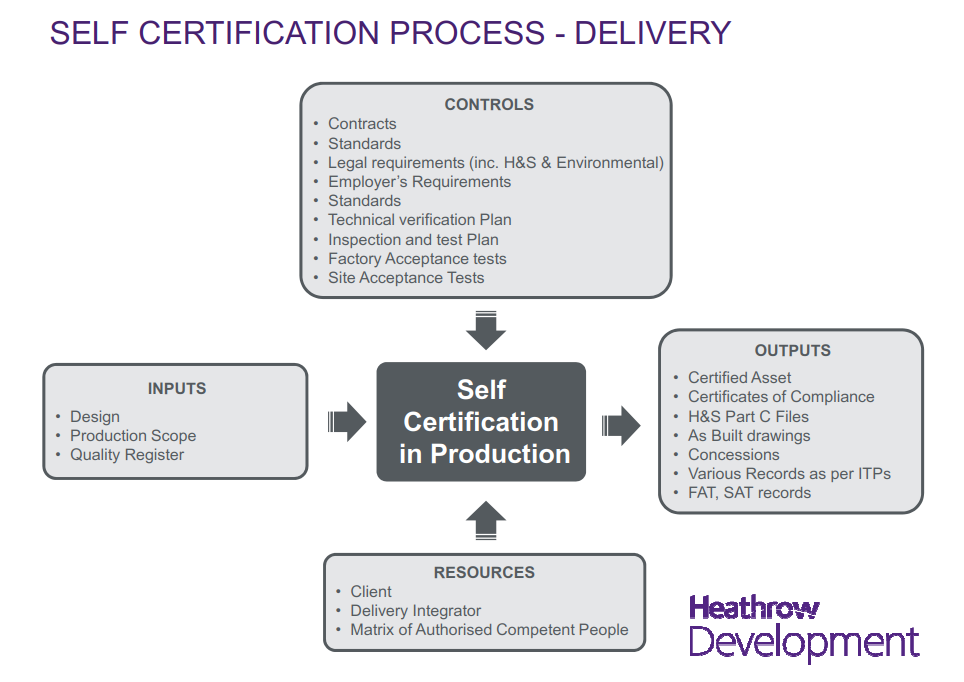
Greg left us with the message that blockers still exist and his role was all about continually recognising and helping remove these. He remains vigilant and watches for
- People returning to traditional type
- Old contractual behaviours
- A drop in trust
- Over processing
- A loss of common sense!
Driving Collaboration – theory in action – Tier 1 perspective
Elvin Box – Mace
Elvin is the chair of the London Constructing Excellence and provided the delegates with a highly energised overview of what collaboration means to him, how it works and his view on the best models that he has encountered.
He started with providing scenarios and different business models to explain how a climate for collaboration can be achieved or not depending on prevailing contractual arrangements. In most cases if the businesses are limited in their outlook, it’s hard to move away from transactional behaviours, however if more sustainable business outcomes are on the table then much more relational and collaborative working arrangements can be developed. Elvin likened this to the difference between a casual relationship and a marriage! Short term commitment v long term commitment.
This was clearly demonstrated by a model that showed how increasing pre-requisites for collaboration do lead to a higher level of collaboration intensity.
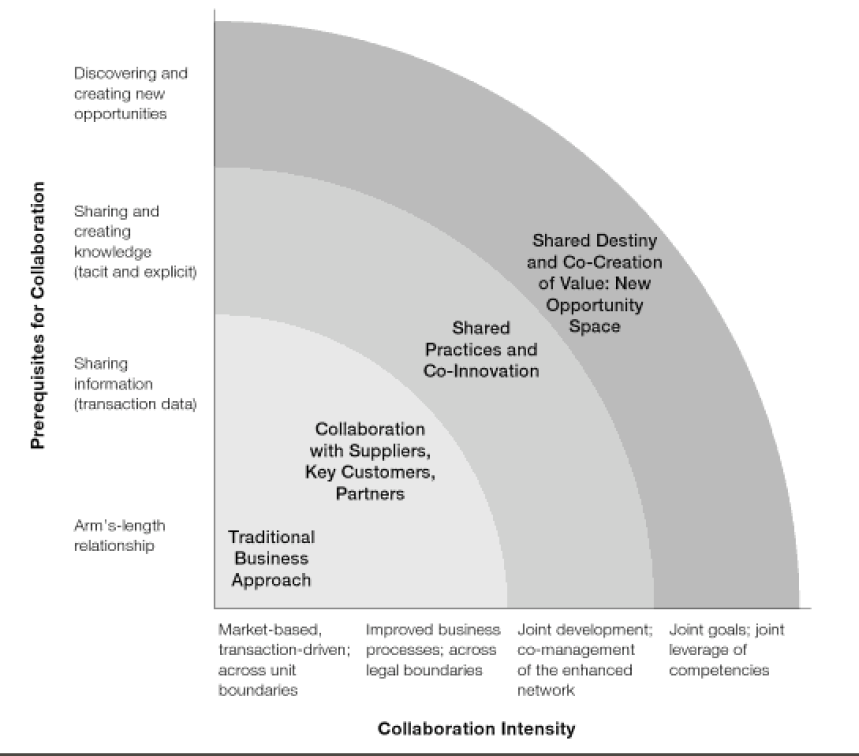
Elvin then showed the audience two models he espouses, the first around ‘hard polarity’ and the second around ‘soft polarity’.
Hard Polarity is what Elvin believes is the ideal model for collaboration to thrive. This is where a collective creativity across People, Places, Process and Product are aligned. And the lines between organisations become blurred – a real synergy with Gregs earlier presentation. In these cases no single organisation possesses, or has access to the required resources, but these are shared across the sum of the parts. Elvin then described the real differentiator, the ‘glue’ of proper co-location, trust, the sharing of risk and integrated processes that start to drive real open behaviours that lead to true collaboration.
Soft Polarity is much more determined by a leadership vision and shared sense of mission, where leaders are seen to walk the talk and act as coaches and advisors. Elvin explained that in these cases, leaders need to exude self-sacrifice and a real understanding of other people’s beliefs for the soft approach to work.
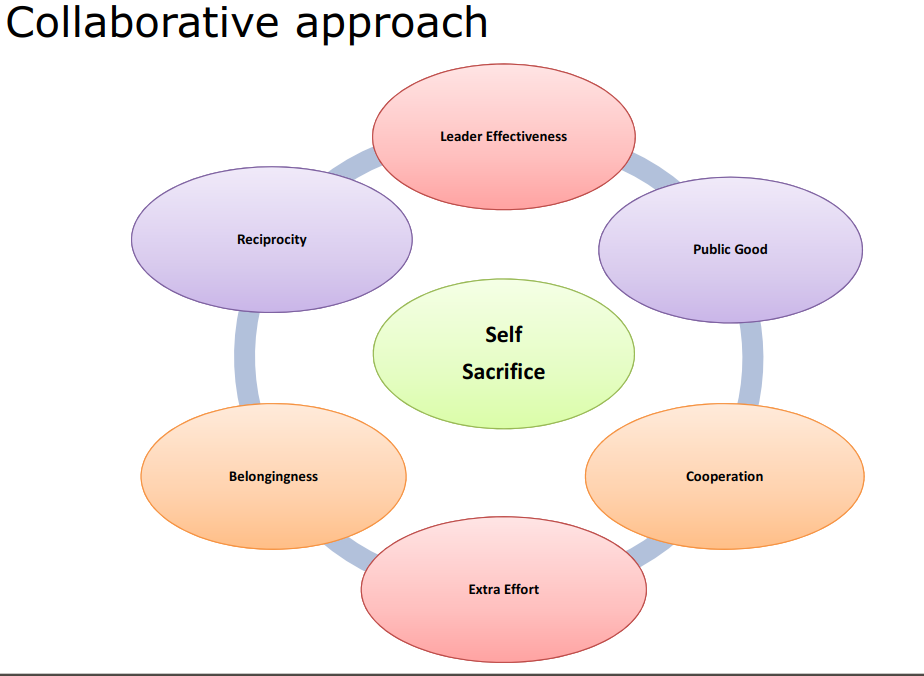
This leads to a culture where curiosity, forgiveness, inclusivity are established alongside a clearly understood set of rules in which to operate.
Elvin concluded by collaboration is all about co-creating value, but this requires collective creativity, real motivational leadership and the glue to make things stick. He concluded that no one thing defines collaboration, it’s all about the sum of the parts that lets real collaboration thrive.
Improving quality through collaboration – Tier 2 perspective
Bethany McCulloch – Head of Quality – Careys
Our final speaker, Bethany then provided an overview on collaboration from the perspective of a Tier 2 Contractor.
Bethany started with an overview of collaboration within Careys and how their self-delivery model enables collaboration across their various business units. This was portrayed visually using BIM modelling from the British Library and Careys visual notice boards. Bethany also reinforced the message from early speakers about the need for everyone involved to walk the walk as well as talk the talk.

Bethany then explained that she had developed the Carey concept around collaboration from the book called “Counselling for toads”. This book vividly brings to life the Parent/Child/Adult relationships familiar to many quality professionals through Toad’s tricky relationships across Wind in the Willows. The book was strongly recommended by Bethany as a fun aid to help drive a collaborative culture within and across businesses.
Bethany built on her overview of how Careys drive collaboration by the establishment of the Carey Way, the introduction of a golden hour on site every morning where Managers walk the job and the leaning out of core processes to simplify and make them easier to follow and adhere to.
She then explained that she was a real believer in behavioural science and had brought this thinking to Careys from her previous roles. Bethany described how this was key to the improvements she was seeing in the collaborative behaviours of her leadership and the Carey supply chain.
Bethany experience showed that not all Tier 1 Contractors Walk the walk and that people have to believe and work hard at making collaborative behaviour stick. She believes the behaviours can become cultural but only where we can nurture longer terms relationships, so that those involved all have an opportunity to buy into the benefits good collaboration can bring.
Bethany finished her presentation with a call to allow everyone should help us to help you!
Conclusion
The evening finished with a lively panel Q&A session chaired by Paul, with many questions aimed at the speakers around how collaboration is a key fundamental requirement in today’s climate. Neil concluded that the evening was immensely though provoking to all those who came and that it was great to see a cross section right across the industry fundamentally agreeing in how to establish a business backdrop that allows and enable collaboration (and all the fruit that this bears) to thrive.
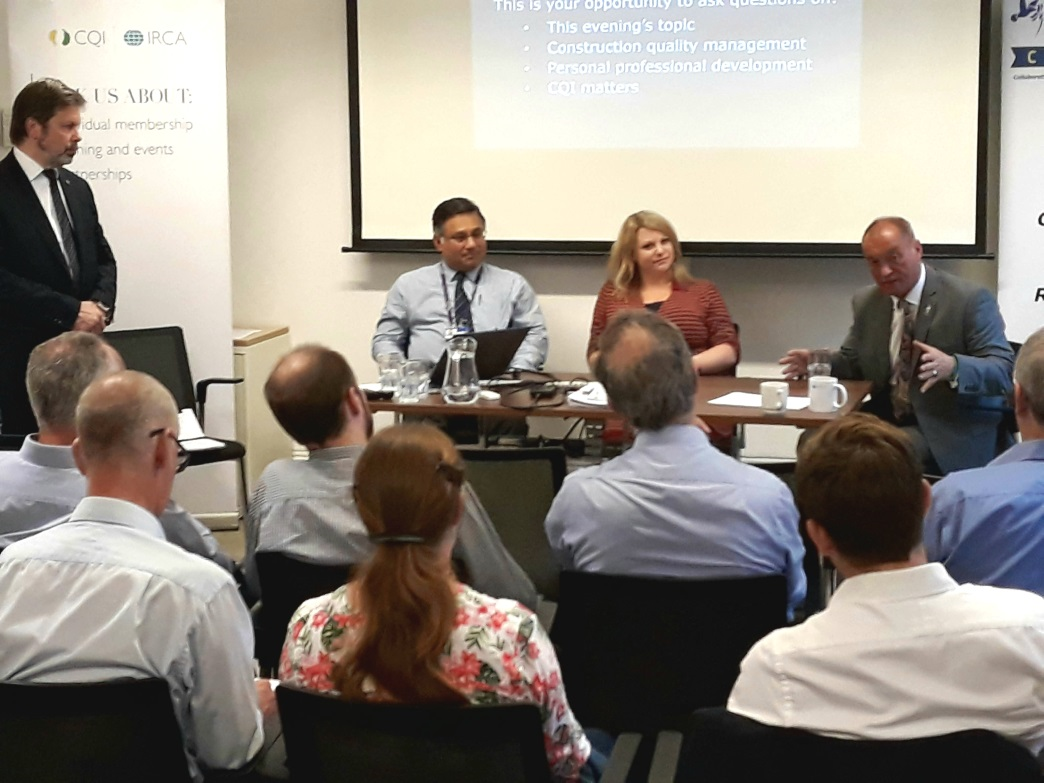
Construction Special Interest Group
The Construction Special Interest Group consists of diverse professionals from the construction sector focussed on advancing the quality and improvement agenda across the industry. Consisting of a number of working groups overseen by a Steering Committee, the members undertake initiatives to support the quality profession. This has included developing a training framework similar to that for IOSH Supervising and Managing Safely for non-quality professionals in construction to provide the knowledge required to plan, manage and monitor works from a quality perspective (https://consig.org/quality-awareness-training). The ConSIG’s Competency Working Group now regularly publishes article on Designing Buildings Wiki website (https://www.designingbuildings.co.uk/wiki/Home) providing information to help manage construction quality on a day to day basis and explaining key topics from a quality perspective.
The ConSIG are always looking for new members to join and assist their efforts. Further information can be found on their website (www.consig.org) or please register your interest by emailing cqiconsig@gmail.com.
Overview summary by Ian Mills – Balfour Beatty Head of Quality
